1720: Bubble Playing Cards
The Great Plague of Marseille hit Western Europe in 1720, taking the lives of nearly 100,000 people in France. While England feared the disease would spread to their own country due to the constant use of Marseille’s ports, they were also dealing with the repercussions of the South Sea Bubble. The South Sea stock market collapsed less than a year after it started to boom. The playing cards featured below satirize the devastating financial crash, detailing both counterfeit and authentic investment trades that ultimately led to the demise of many fortunes. Created and designed by Thomas Carington Bowles, the cards placed both a comical tone on a devastating financial time and helped to subside worries about the disease’s spread.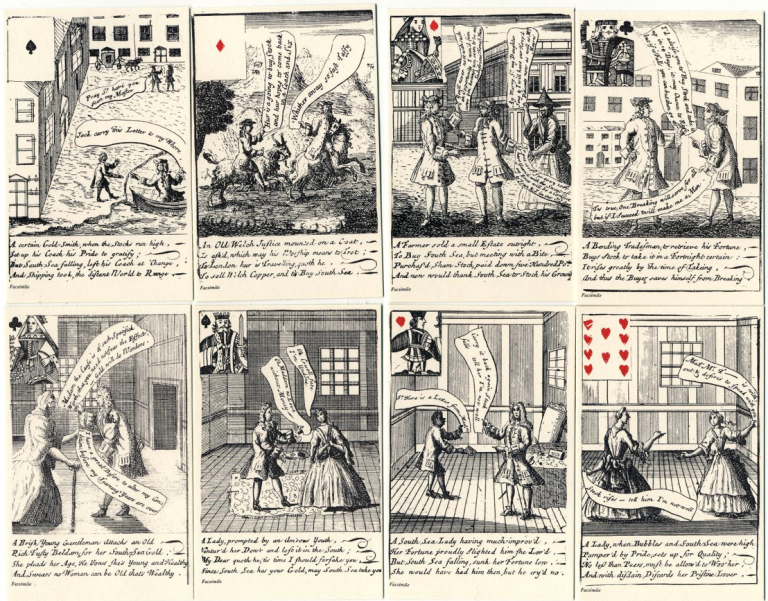
1817: Durak Card Game
Reports of Cholera can date back to 5th century B.C., but it wasn’t until 1817 that the first Cholera pandemic occurred. Over the course of six years, this disease hit India, Sri Lanka, Thailand, China, Japan and parts of European territories like Russia. The card game Durak became popular in Russia during the 19th century. Its exact origin is unclear, but it can be assumed that this game allowed for a decent distraction while Cholera spread throughout Russia. There are numerous sources that label it as the most popular and well-known card game in Russia. Durak’s objective is to avoid being the last player holding cards and requires a 36-card deck. Durak consists of two types of players: attackers and defenders. A player who leads with the lowest trump card is the first attacker. The player who sits to the left of the attacker is referred to as the first defender. Once a player places a playing card into the middle, an attack is put into place. Defenders will counter this attack by placing a higher-ranking card of the same suit into the middle. Now, if the attacker placed a non-trump suited card into the middle, then a defender simply must play any trump card to beat the card played. If the defender succeeds, then the attacker can try again by playing a card that shares the rank of the previous card played. Once the first attack/defend ends, the player to the left of the attacker makes their move.1918: Uncle Wiggily Board Game
Spanish Influenza caused a global pandemic that killed nearly 50 million people. Some of the authoritative measures taken during this 20th-century pandemic mirror our own methods against the Coronavirus. This included quarantining those who were ill, closing schools and enforcing the value of handwashing and wearing masks. Playing card games and board games with one’s family increased in popularity during the 20th century. Two years prior to the outbreak, Milton Bradley Co., an American board game manufacturer, transformed the famous novel, “Uncle Wiggily’s Adventures” by Howard Garis, into a board game. The game’s popularity matched that of the novels’, allowing for the series to come to life in a visually appealing manner. While the game has undergone many changes since its publication, it has reigned in popularity for over a century while also having survived the deadliest pandemic in history.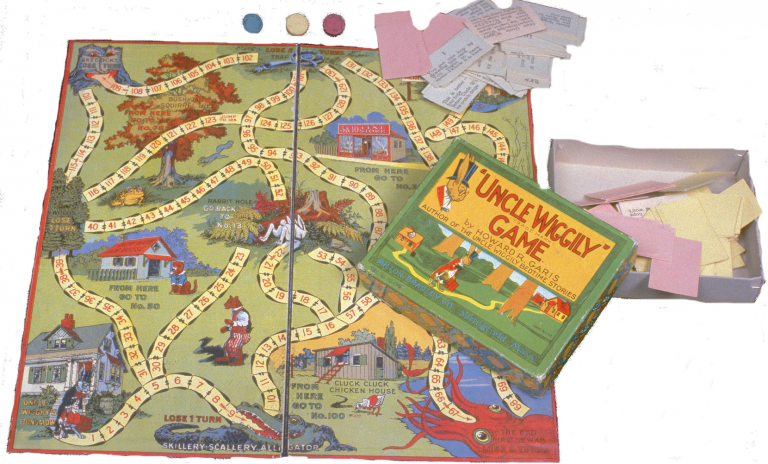
2019: Our Clients’ Card Designs
For the past seven weeks or so, we have been living in an unfamiliar world. Reality hit home when the Center for Disease Control and Prevention (CDC) named COVID-19 a pandemic. We encourage both our clients and prospective clients to continue working on their customized game designs. This is the perfect opportunity to take your mind off of the current situation. Consider creating a playing card project that brings enjoyment and entertainment. Here are some incredible products that we have printed for our clients during COVID-19: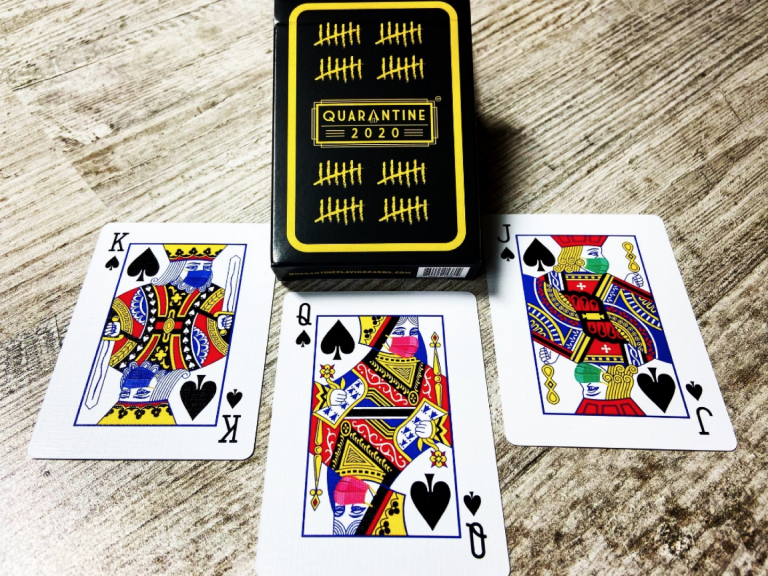
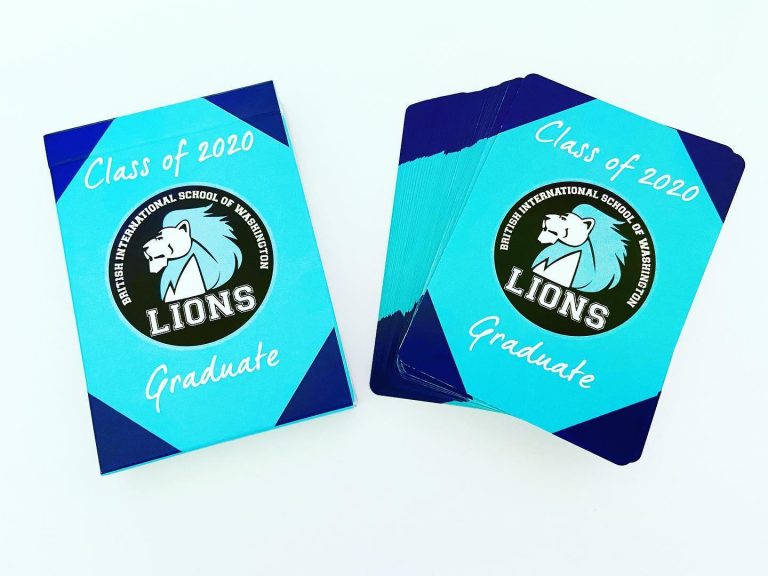
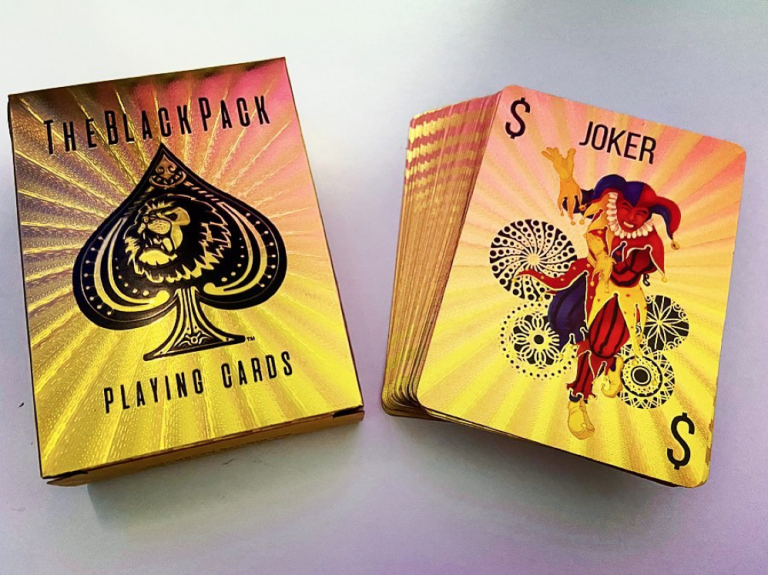

About Shuffled Ink
Shuffled Ink is a multigenerational family business that specializes in printing custom playing cards, tarot & flash cards, custom card games, packaging and more for businesses and individuals worldwide.
To receive complimentary samples of our card products, either follow this link or please include your delivery address and phone number on your custom quote request form.
Another good one!
Kenny Rogers song…
“you gotta know when to hold em, know when to fold em, know when to walk away, know when to run…..
Great article!